AM: Arrival to Baltra Island
Sullivan Bay Upon arrival, reception, and assistance at the airport, transfer from Baltra Airport to the M/C Endemic.
PM: Sullivan Bay - Santiago Island
In the afternoon, you will visit Sullivan Bay, located on the east coast of Santiago Island. We land on a white coral sand beach and begin our walk over lava that flowed less than 100 years ago. This is the perfect place to see and feel the volcanic origin of the Galapagos. Also in this area, you will admire flora that grows in lava fields.


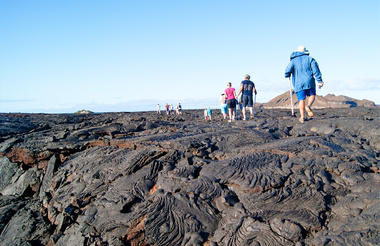
Sullivan Bay - Santiago Island
- Activities: Hiking, snorkeling
- Type of landing: wet landing
Afternoon
AM: Sierra Negra Volcano - Isabela Island
Isabela Island is the largest of the archipelago with a surface of 4,588 square kilometers. It encompasses more than half of the total land area of the Galapagos. In the morning, you will be transported to the Wetlands (Humedales), which are a complex of trails 6 kilometers long, located south of Isabela Island. They have a wide variety of flora and abundant birdlife, including gallinules, finches, stilts, and ducks among others. Or you may visit Sierra Negra Volcano, one of the largest craters in the archipelago with a diameter of five kilometers. It offers mesmerizing views with great contrast in colors between lava fields, vegetation, and fumaroles. On the way up to Orchilla hill, giant tortoises and marine iguanas will appear. From the viewpoint of the spectacular scenery of the bay, the town of Puerto Villamil, volcanoes, islets, and rocks can be appreciated. Isabela wetlands have endemic and introduced species.
PM: Breeding Center & Wall of Tears - Isabela Island
After lunch visits the Arnaldo Tupiza Breeding Center of Isabela, infant and juvenile giant tortoises can be seen until they are ready to be released and survive in the wild. Or you may visit the Wall of Tears. This is a man-made monument which has been built in the ’40s by prisoners since Isabela island was once an Ecuadorian penal colony, and building up the wall was part of the punishment. On the way back to the yacht, be ready to spot flamingos and other water birds.
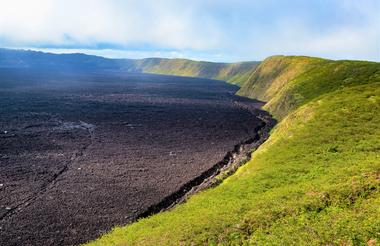
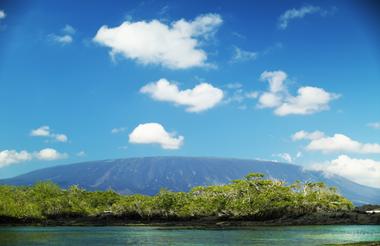
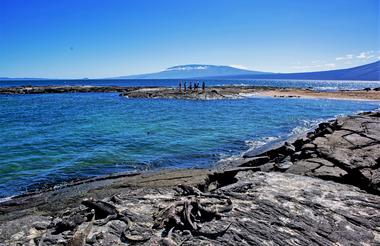
Sierra Negra Volcano - Isabela Island
- Activities: Hiking
- Type of landing: dry landing
Breeding Center & Wall of Tears - Isabela Island
- Activities: Hiking
- Type of landing: dry landing
AM: Elizabeth Bay - Isabela Island
In the morning, you will discover Elizabeth Bay, which is a marine visitor site. The excursion is carried out in a zodiac and so there is no landing point. Your zodiac ride starts with a visit to Mariela's islets where there is the largest and most important penguin colony in the Galapagos Islands. The excursion continues into the cove that is surrounded by red mangroves where you can spot sea turtles, flightless cormorants, spotted eagle rays, golden rays, brown pelicans, and sea lions.
PM: Urbina Bay - Isabela Island
In the afternoon, Urbina Bay will be visited. Here you can see coral formations, large colored land iguanas. The possibility of seeing giant turtles, flightless cormorants, blue-footed boobies, penguins, and marine iguanas is excellent.


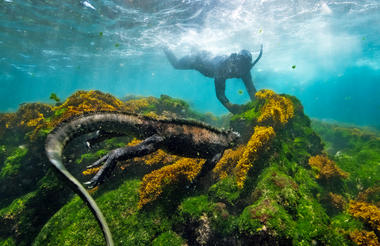
Elizabeth Bay - Isabela Island
- Activities: Panga Ride
- Type of landing: N/A
Urbina Bay - Isabela Island
- Activities: Hiking, snorkeling
- Type of landing: wet landing
Morning
Afternoon
AM: Tagus Cove - Isabela Island
After breakfast, Tagus Cove will be the first attraction to see. A ride along the cliffs in a zodiac will give visitors a good chance to see the Galapagos penguin, the flightless cormorant, and other sea birds. From the landing dock, it is about a 30-minute hike along the trail up to the top of the cliff from where you can view Darwin Lake, a saline lake saltier than the sea. You can also see several volcanoes from this location.
PM: Espinosa Point - Fernandina Island
After lunch, Espinoza point will be visited, which is one of Fernandina’s visit points. Located within a fascinating lava scenery with Lava-Cactuses. On the surface of the lava, mangroves thrive. The highlights are sea lions, penguins, the flightless cormorant (especially in spring and summer), and one of the biggest iguana colonies of Galápagos.



Tagus Cove - Isabela Island
- Activities: Panga Ride, Hiking, Snorkeling, paddleboard
- Type of landing: dry landing
Espinosa Point - Fernandina Island
- Activities: Hiking, Snorkeling,
- Type of landing: dry landing
Buccaneer Cove - Santiago Island
After breakfast, Tagus Cove will be the first attraction to see. A ride along the cliffs in a zodiac will give visitors a good chance to see the Galapagos penguin, the flightless cormorant, and other sea birds. From the landing dock, it is about a 30-minute hike along the trail up to the top of the cliff from where you can view Darwin Lake, a saline lake saltier than the sea. You can also see several volcanoes from this location.
Espumilla Beach - Rabida Island
After breakfast, Tagus Cove will be the first attraction to see. A ride along the cliffs in a zodiac will give visitors a good chance to see the Galapagos penguin, the flightless cormorant, and other sea birds. From the landing dock, it is about a 30-minute hike along the trail up to the top of the cliff from where you can view Darwin Lake, a saline lake saltier than the sea. You can also see several volcanoes from this location.
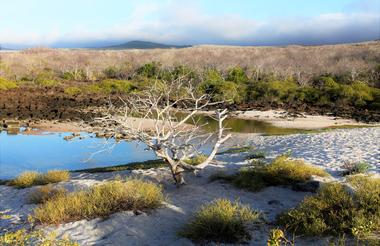


Buccaneer Cove - Santiago Island
- Activities: Panga Ride, Hiking, Snorkeling, paddleboard
- Type of landing: dry landing
Espumilla Beach - Rabida Island
- Activities: Panga Ride, Hiking, Snorkeling, paddleboard
- Type of landing: wet landing
AM: Mosquera Islet
In the morning, visit Mosquera, a small islet found between Baltra & North Seymour Islands. Lava gulls, sea lions, Sally lightfoot crabs inhabit this sandbank with an extension of over 600 meters. It also hosts the largest populations of sea lions and orca whales that can be seen occasionally depending on the season you visit the islet.
After this last visit, transfer to Baltra airport for your return flight to mainland Ecuador. Assistance and farewell at the airport.
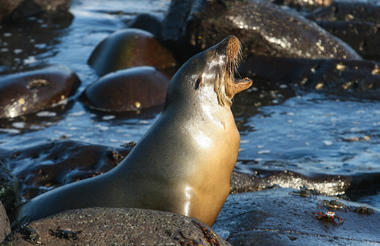
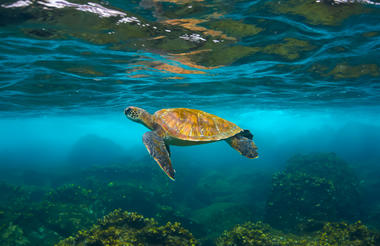
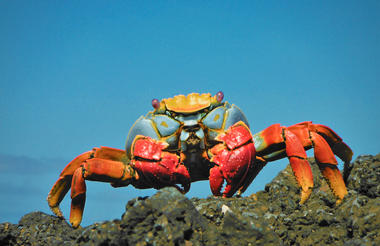
Mosquera Islet
- Activities: hiking, snorkeling
Morning

